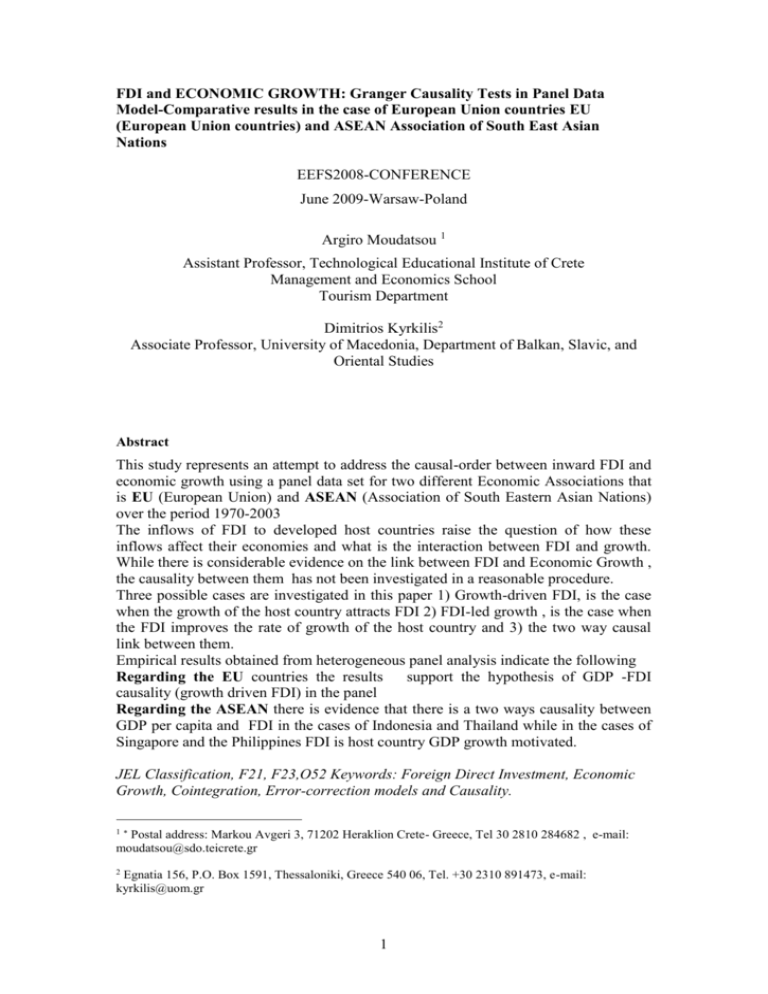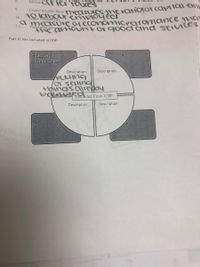Introduction
The relationship between the gross domestic product (GDP) and foreign exchange (forex) reserves plays a crucial role in macroeconomic stability. GDP measures the total monetary value of all final goods and services produced within an economy, while forex reserves are assets held by the central banks to influence currency exchange rates and support the economy in case of financial crises. Understanding the causal relationship between these two variables is essential for formulating effective economic policies.

Image: studylib.net
This article provides a comprehensive review of the literature on the Granger causality relationship between GDP and forex reserves. We examine the empirical findings, theoretical underpinnings, and policy implications of this relationship. By shedding light on the intricate dynamics between these two economic indicators, we aim to enhance the understanding and management of macroeconomic stability.
Historical Perspective and Literature Background
The concept of Granger causality, named after the renowned econometrician Clive Granger, revolves around establishing the direction of causality between time series variables. Granger causality implies that variable A causes variable B if changes in A precede and predict changes in B. The concept of Granger causality has been extensively applied in economic research, including investigations into the relationship between GDP and forex reserves.
The early literature on GDP-forex reserve causality focused primarily on industrialized economies. However, in recent times, researchers have increasingly extended the analysis to emerging and developing economies, reflecting the growing importance of these countries in the global economy.
Empirical Findings
The empirical literature on GDP-forex reserve Granger causality presents a mixed picture. Some studies suggest a bidirectional relationship, where both GDP and forex reserves influence each other. Others indicate a unidirectional relationship, where GDP Granger-causes forex reserves, or vice versa.
For example, a study by Narayan and Narayan (2005) found evidence of a bidirectional Granger causality between GDP and forex reserves in Vietnam. However, a more recent study by Shahbaz et al. (2020) showed that GDP Granger-causes forex reserves in Pakistan, but not vice versa.
Variations in the empirical findings across countries and time periods can be attributed to factors such as the level of economic development, the effectiveness of monetary policy, and the degree of financial integration.
Theoretical Underpinnings
The theoretical underpinnings of the Granger causality relationship between GDP and forex reserves are closely intertwined with the monetary policy framework adopted by a country. Under a fixed exchange rate regime, the central bank maintains the exchange rate at a predetermined level by buying or selling forex reserves. In such cases, it is expected that changes in forex reserves will lead to changes in GDP (i.e., forex reserve Granger-causes GDP).
In contrast, under a floating exchange rate regime, the central bank allows the exchange rate to fluctuate freely. When the economy experiences a trade deficit, the exchange rate depreciates, making exports more competitive and increasing GDP (i.e., GDP Granger-causes forex reserves).

Image: www.bartleby.com
Policy Implications
The policy implications of the GDP-forex reserve Granger causality relationship are far-reaching. For countries with a strong and stable GDP, authorities can use forex reserves to smooth out fluctuations in the foreign exchange market and prevent sharp depreciation. Conversely, countries with a constrained GDP may need to prioritize building up forex reserves to provide a buffer against external shocks and maintain financial stability.
Central banks can use the Granger causality framework to assess the effectiveness of their macroeconomic policies. If a central bank intends to use forex reserves as a tool for macroeconomic stabilization, it should ensure that the desired causal relationship exists between forex reserves and the macroeconomic variables being targeted.
Gdp And Forex Reserve Granger Causality Literature Review
Conclusion
The Granger causality relationship between GDP and forex reserves is a complex and multifaceted phenomenon. The empirical literature provides mixed evidence, highlighting the influence of country-specific factors and economic context. The theoretical underpinnings and policy implications of this relationship vary depending on the monetary policy framework adopted by a country.
Understanding the GDP-forex reserve Granger causality relationship is essential for formulating effective macroeconomic policies and maintaining financial stability. Future research should continue to explore the nuances of this relationship, particularly in emerging and developing economies.






